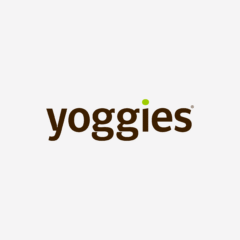“A company that does not have to save cash can make a significant profit from the recession,” says Marek Hlavica, head of the Association of Communication Agencies.
Throughout the year, the position of online and television advertising has strengthened significantly. Other types of advertising are struggling to keep up. Experts advise businesses not to cut marketing expenses. They will be better off for it when we sail out of this crisis.
As with other areas, advertising, marketing and customer behaviour have deviated from the norm during this year’s pandemic. “Some fields of communication have close to perished, especially those that require groups of people – events and outdoor advertising. The latter mainly suffers from the fact that fewer people travel by public transport, where the advertising media are located,” explains Marek Hlavica, Executive Director of the Association of Communication Agencies.
“Event sponsorship and the activation marketing associated with it, such as the sale of beer at events or raffles for in-kind prizes, have also found themselves on shaky ground.”
When stores are closed and not everything can be bought online, it also makes no sense to pay for advertising at the point of sale, likewise marketing items and services related to tourism.
“In terms of the composition of clients’ advertising spend, of course we can see a decrease in the travel and culture segment, but on the other hand there is increased interest in advertising from newly established and existing e-shops in the home&living and garden segment,” informs Tomáš Búřil, Sales Director at Seznam.cz.
In general, the shortest way to hooking a customer is to reach them in the environment where they shop. Online is now where this is.
“With more people shopping online in general this year, we expect investment in online advertising to increase. This season will be one of the most profitable for e-commerce, as a large part of shopping will move to the online domain. The Christmas season has begun and it is already clear that it is playing into the hand of e-shops, delivery services, web portals and internet comparators of goods,” says Búřil.
On top of this, the impact of an online campaign can be precisely measured, unlike other media.
Many new online stores and brands have appeared on the market, as brands have gone online during the coronavirus epidemic and need to introduce their products to the online population. Starting to build brand awareness in the online world is now crucial.
“Brand awareness will be the key to success. It will clearly separate the successful from the less successful in the online world. The ideal advertising format for this is branding, video ads and other visible advertising with a measurable impact. For example, the dynamic banner format works similarly to a shop window. It can be used by brands that have so far promoted their goods only in bricks-and-mortar stores. Product advertising is another channel that no e-shop should disregard this year. Because product ads appear in search results, they are published exactly when the user is actively looking for the products that the advertiser offers,” concludes Búřil.
Online and television are the only sectors to see growth this year
But according to Hlavica, mass market brands must go mainly through television advertising; it is not possible to only have a presence online. While online advertising is cheaper to produce than television, television advertising has the most effective (the lowest cost per unit) reach. “This applies to the products and services that almost everybody needs,” added Hlavica.
“We can see from the statistics that TV advertising has only been growing since the spring. People are now at home and consume a lot of media, mostly television, even young people,” he says.
“Despite certain losses during 2020 caused by the covid-19 pandemic, which none of the monitored media types avoided, especially in the second quarter, the importance of television and the Internet certainly did not decrease. So far, these two strongest media types are the only ones that have managed to maintain growth this year,” observes Tomáš Hynčica, Business & Research Director at Nielsen Admosphere.
According to Hlavica, various research shows that it would be a very bad tactic to rely solely on online advertising. “This significantly reduces brand support. The value of a brand co-determines the price, you cannot ask for the same price for the same non-branded goods as for branded ones,” explains Hlavica.
Crisis is a good time to invest – advertising is no exception
During a September webinar British professor of marketing Mark Ritson emphasized how, in a recession, companies must not stop putting money into communication and advertising.
If they can afford maintaining or increasing marketing budgets, it will pay off after the crisis in the form of a higher market share. Experience from several past recessions of the 20th century proves this. Conversely, if advertising and marketing spending is partially or completely cut, brands will lose a part of their market share to more prudent competitors when the situation stabilizes.
If this is so well known to be factual, why doesn’t everyone do it? “Because cutting marketing costs is easier than laying off employees, cutting wages, selling real estate, downsizing production, or breaking off long-term relationships with suppliers when you don’t know if you will ever need it all again,” says Hlavica.
The advantage of marketing costs is that as quickly as they can be cut, they can be put back into play quickly. That is, if you have a pocket to dip your hand into. “A business that does not have to save cash can make a significant profit from the recession,” says the head of AKA.
According to a three-year-old study by Deloitte, which measured the economic benefits of advertising in EU economies, every euro invested in marketing communications in EU countries will return seven-fold, which means it will generate 7 euros in GDP.
Cautious optimism
Over the past three years, total advertising and communication spending has risen by single percentages. According to a Nielsen Admosphere survey for the Association of Communication Agencies, more than half of advertisers had to cut their marketing budget for this year in response to the pandemic; 14 percent of respondents by even more than half. One third of advertisers maintained their advertising budget and the remaining advertisers even increased the budget in response to the new opportunities.
The survey also showed that there is cautious optimism among advertisers about next year. One third of the respondents expect a reduction in spending compared to their original plans; a third will not change their plans and about a quarter intend to increase the budget compared to the original plan. However, even one in ten advertisers is unsure about the budget for next year.



